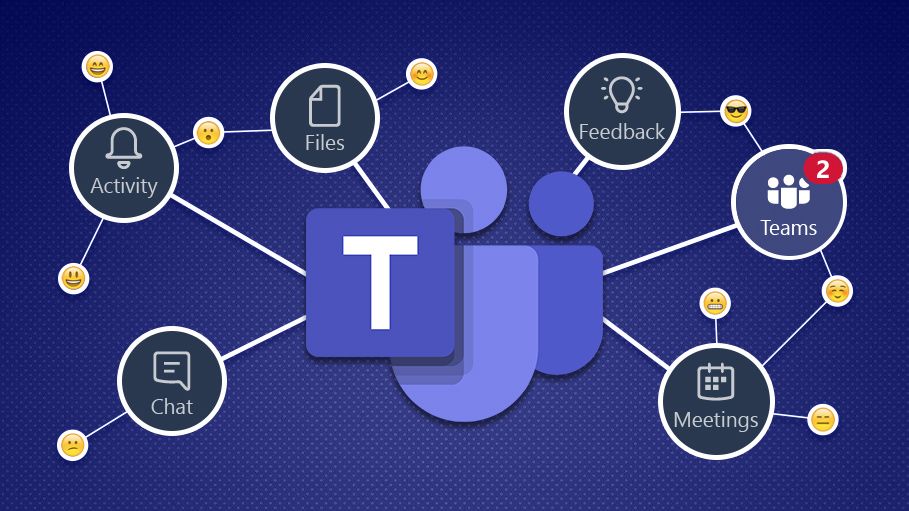The Paradigm Shift to Distributed Workplaces

The modern business landscape is characterized by accelerating global connectivity, necessitating highly flexible and geographically dispersed workforces. The era of teams restricted to a single physical office space has rapidly given way to dynamic, often international, collaborations.
This profound shift has made the reliable, scalable, and secure use of cloud-based collaboration tools not merely a convenience, but an absolute operational imperative.
These tools, hosted entirely online and accessible via any internet-enabled device, have become the digital backbone that sustains productivity, fosters seamless communication, and drives innovation across fragmented teams.
The concept of collaboration has evolved far beyond simple email exchanges. Today’s successful teamwork requires instantaneous document co-editing, real-time video conferencing, perpetual project tracking, and centralized knowledge management. Traditional desktop software and locally stored files simply cannot keep pace with these demands.
Cloud-based solutions dismantle the barriers of time zones and physical proximity, ensuring that every team member, from a remote freelancer in Asia to a corporate executive in Europe, is synchronized and working from the single, most current version of any project artifact.
This extensive guide will delve into the transformative impact of these collaboration platforms, meticulously examining the diverse categories of tools, the immense benefits they yield for productivity and profitability, the critical considerations for successful implementation, and the exciting trajectory of this essential technology in shaping the future of work.
Understanding and strategically adopting these tools is no longer optional—it is the core strategy for maintaining a competitive edge in the twenty-first-century global economy.
I. Understanding the Architecture of Cloud Collaboration
To appreciate the efficacy of these tools, one must understand their underlying architecture, which is fundamentally different from legacy on-premises solutions.
Cloud collaboration tools leverage the vast infrastructure of major providers (like Amazon Web Services, Microsoft Azure, or Google Cloud Platform) to offer software as a service (SaaS).
A. Software as a Service (SaaS) Model
The SaaS model dictates that the collaboration application is centrally hosted and managed by the vendor. This translates to several key advantages for the end-user.
- A. Automatic Updates and Maintenance
The vendor handles all patching, security updates, and feature upgrades, ensuring users always operate on the latest, most secure version without manual intervention. - B. Scalability on Demand
Teams can instantly scale their usage up or down based on project needs, paying only for the resources consumed. This agility is impossible with fixed, on-premises hardware. - C. Universal Accessibility
Access is granted via standard web browsers or dedicated mobile applications, making the geographical location of the user irrelevant, provided they have an internet connection.
B. Centralized Data Management
All project data, communication logs, and files are stored in secure, redundant cloud servers. This centralization eliminates the dangers associated with local storage. It also facilitates crucial data security and compliance measures, which are managed at an enterprise level by the provider.
C. Real-Time Synchronization
The core technical achievement of these platforms is the near-instantaneous synchronization of changes. When one user modifies a document, the change is immediately reflected for all other concurrent users.
This feature is fundamental to genuine co-creation and eliminates the notorious “save-and-send” bottleneck of email-based collaboration.
II. Categorization of Essential Cloud Collaboration Tools
The modern collaboration suite is not a single application but an integrated ecosystem comprising several distinct tool categories, each serving a vital function in the team lifecycle.
A. Communication Hubs and Unified Messaging
These tools replace disparate communication methods like internal email chains and fragmented instant messages with a centralized, persistent conversation archive.
- A. Channel-Based Messaging
Tools like Slack or Microsoft Teams organize conversations into dedicated channels for projects, departments, or topics, ensuring all relevant information remains contextually grouped and searchable. - B. Direct Messaging and Status Updates
Facilitates quick, informal one-to-one communication and provides real-time indicators of a colleague’s availability (e.g., online, in a meeting, away). - C. Integration with Other Tools
Seamlessly connects messaging with project management and document tools, allowing users to, for example, view project task updates or start video calls directly from a chat channel.
B. Video Conferencing and Virtual Meeting Platforms
Essential for bridging the distance gap, these tools simulate face-to-face interaction, critical for decision-making, team bonding, and client presentations.
- A. High-Fidelity Audio/Video
Provides clear communication regardless of the participant’s location, often supporting high participant counts necessary for large company town halls or webinars. - B. Screen Sharing and Annotation
Allows users to present work and collaborate visually in real-time, often including virtual whiteboards or co-annotation features. - C. Recording and Transcription
Automatically captures meetings for asynchronous viewing by team members in different time zones, ensuring everyone has access to the discussion and decisions.
C. Document Co-creation and Cloud Storage
These tools eliminate version control issues by allowing multiple users to work on the same file simultaneously and store all final documents centrally.
- A. Real-Time Co-Authoring
Platforms like Google Workspace (Docs, Sheets) or Microsoft 365 (Word, Excel) allow dozens of users to edit the same file simultaneously, observing changes as they occur. - B. Version History and Rollback
Maintains a detailed, non-destructive history of every edit made to a file, allowing administrators or team members to revert to any previous state, mitigating the risk of accidental loss or unwanted changes. - C. Secure File Sharing and Permissions
Offers granular control over who can view, edit, or share documents, ensuring sensitive data remains protected and compliant with corporate governance policies.
D. Project and Task Management Systems
These platforms organize workflows, assign responsibilities, and track progress, providing a high-level view of an entire project portfolio.
- A. Kanban and Gantt Views
Presents project tasks visually, enabling teams to easily track tasks through various stages (e.g., To Do, In Progress, Complete) or visualize dependencies and timelines. - B. Automated Workflows
Allows teams to set up rules to automatically assign tasks, send reminders, or update status based on predefined triggers, minimizing manual administrative overhead. - C. Resource Allocation
Helps managers allocate tasks and estimate workloads across team members, preventing burnout and ensuring deadlines are realistic and achievable.
III. Profound Benefits for Business Productivity and Profitability
The strategic adoption of cloud-based collaboration tools delivers tangible, quantifiable improvements across various aspects of business operations.
A. Unprecedented Productivity Gains
- A. Reduced Switching Costs
By integrating communication, documentation, and task management into one ecosystem, employees spend less time switching between disparate applications, resulting in longer periods of focused work. - B. Accelerated Decision-Making
Instant access to data and real-time communication channels ensures that questions are answered and approvals are secured rapidly, shortening project cycles and time-to-market for products. - C. Elimination of Version Conflict
Teams always work on the single, authoritative document, eliminating the time previously wasted reconciling changes from multiple outdated copies.
B. Significant Cost Reduction
- A. Lower IT Overhead
Moving from local servers and perpetually licensed software to the SaaS model eliminates the massive upfront capital expenditure on hardware and reduces ongoing costs for physical maintenance, power consumption, and specialized IT personnel. - B. Optimized Real Estate
By enabling effective remote and hybrid work models, companies can reduce or optimize expensive office space, redirecting those savings into higher-value investments. - C. Reduced Travel Expenses
High-quality video conferencing and collaboration platforms drastically reduce the need for physical travel, saving money and increasing employee availability.
C. Enhanced Talent Acquisition and Retention
- A. Access to Global Talent
Companies are no longer geographically limited in their hiring. Collaboration tools allow businesses to hire the best talent globally, regardless of where the employee resides. - B. Improved Employee Satisfaction
Offering flexible work arrangements, powered by these tools, is a key factor in job satisfaction and loyalty, leading to higher retention rates and reduced costs associated with employee turnover. - C. Promoted Inclusive Culture
These tools standardize communication and process, ensuring that remote workers have the same level of access and visibility as their in-office counterparts, fostering an equitable and inclusive workplace culture.
IV. Implementation Strategies for Optimal Adoption
Simply purchasing cloud software is insufficient; successful adoption requires a strategic, phased approach that addresses technology, process, and human factors.
A. Define Clear Collaboration Policies
Successful deployment begins with establishing clear operational guidelines to prevent tool sprawl and confusion.
- A. The “Tool Stack” Definition
Officially designate which tool is to be used for which purpose (e.g., “Slack is for internal messaging,” “Zoom is for client meetings,” “Trello is for marketing tasks”). - B. Communication Etiquette
Establish rules for response times (e.g., direct messages require a response within one hour, email within one business day) and when to use synchronous (real-time chat/calls) versus asynchronous (email/documentation) communication. - C. Data Security and Access
Define protocols for sensitive data handling, including mandatory two-factor authentication (2FA) and standardized procedures for managing external user access.
B. Prioritize Phased Rollout and Training
- A. Pilot Programs with Champions
Start deployment with a small, receptive team (the “champions”) who can test the tools, provide feedback, and serve as internal experts to the wider organization. - B. Mandatory and Contextual Training
Offer comprehensive training that goes beyond simple feature lists, focusing instead on real-world workflow integration and best practices tailored to specific departments (e.g., how the sales team uses the CRM integration). - C. Migrate Data Strategically
Plan the migration of existing documents and projects carefully, utilizing version control capabilities to prevent data loss or confusion during the transition period.
C. Measure and Iterate on Success
The process must be viewed as continuous improvement, not a one-time launch.
- A. Establish Key Performance Indicators (KPIs)
Track metrics such as reduction in internal email volume, completion rate of project tasks, time-to-decision metrics, and overall employee satisfaction surveys regarding the new tools. - B. Gather Continuous User Feedback
Use internal surveys and feedback channels to identify friction points and areas where training or policy adjustments are needed. - C. Audit Tool Usage and Licensing
Regularly review licensing costs against actual user activity to ensure cost-efficiency and to consolidate any underutilized or redundant software subscriptions.
V. The Evolving Frontier: Future Trends in Cloud Collaboration
The innovation in collaboration technology is relentless, driven by advancements in Artificial Intelligence (AI) and the increasing complexity of global teams.
A. Deeper Integration with Artificial Intelligence (AI)
AI is moving beyond simple search and becoming a proactive collaborator within the tools.
- A. Automated Meeting Summarization
AI will automatically listen to and transcribe meetings, generating concise summaries of key decisions, action items, and next steps, distributing them instantly to participants. - B. Contextual Information Retrieval
Collaboration platforms will use AI to proactively surface relevant documents, expertise, and historical project data to a user based on the task they are currently performing or the message they are drafting. - C. Intelligent Workflow Automation
AI will learn team patterns to suggest optimal workflows, automatically assign incoming tasks based on team capacity and skill sets, and predict potential project delays before they become critical.
B. Immersive Collaboration and the Metaverse
The next wave of tools will incorporate more sensory-rich and spatially aware interfaces.
- A. Virtual and Augmented Reality (VR/AR) Workspaces
Teams will use VR headsets to hold meetings in shared virtual rooms, collaborating on 3D models or complex data visualizations as if they were physically present. AR will layer digital information onto the real-world view for fieldwork or remote equipment maintenance. - B. Digital Twin and Simulation
Complex industrial or architectural teams will collaborate on digital twins—virtual replicas of physical assets—allowing global teams to interact with a model simultaneously, testing changes and identifying flaws before physical construction or manufacturing begins.
C. Asynchronous and Global-First Design
As remote work becomes the norm, tool design will further prioritize working across time zones.
- A. Enhanced Asynchronous Tools
Features dedicated to non-real-time collaboration, such as advanced video messaging (where recipients can watch and respond at their convenience), structured status updates, and robust knowledge bases will become standard. - B. Built-in Language Translation
Real-time translation within messaging and video conferencing tools will seamlessly enable cross-cultural and multilingual teams to collaborate without relying on external services, significantly boosting globalization efforts.
Conclusion
Cloud-based collaboration tools have definitively transcended their role as supplemental applications. They are now the central nervous system of the modern, successful enterprise, essential for managing a global talent pool, driving operational efficiency, and maintaining business continuity in a dynamic world.
From the instantaneous, synchronized co-editing of documents to the organized tracking of complex projects across continents, these platforms deliver the speed, security, and scalability required by twenty-first-century business.
The strategic investment in and thoughtful integration of these tools—backed by clear policies, robust training, and a continuous focus on security—will dictate the competitive strength and innovation capacity of organizations for the coming decades.
The future of work is undeniably flexible, remote-friendly, and profoundly collaborative, and cloud tools are the indispensable agents making this transformation possible.









